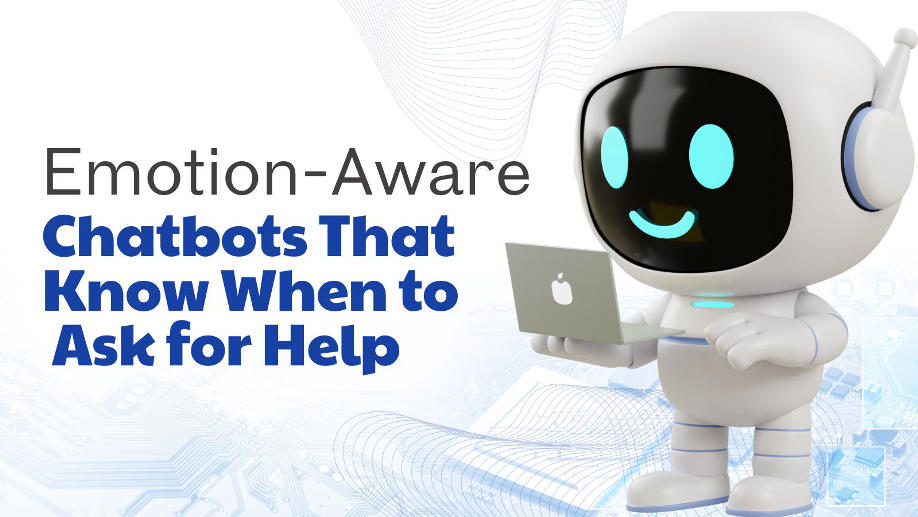AI offers many new opportunities by improving production steps, making the logistics of moving goods more effective, and developing driver abilities and self-driving tech. When joined with hyperautomation solutions, robotic process automation (RPA), and artificial intelligence (AI) process automation, it starts to transform every automobile industry sector.
This article discusses the benefits, different technologies, and uses of AI in the present and future of cars.
Important Ways AI Helps The Automotive Industry
1. Making Processes Automated using Artificial Intelligence
Design, manufacturing, and after-sales support now depend less on humans because artificial intelligence is automated. It upgrades processes, be it handling inventory or performing predictive maintenance.
As an example, using RPA bots, a leading automotive company was able to automatically process three-quarters of its invoices. As a result, there were 40% quicker invoice turnarounds and 30% fewer errors.
2. Stricter rules in Quality Control
By using AI, computer vision is used in factories to examine parts for flaws, notice any unusual changes, and guarantee proper measurements. With much higher precision, AI can review visual information 1000 times more quickly than a person can understand it. To spot and fix flaws instantly, Tesla uses more than 1,000 AI cameras at its Gigafactories.
3. Improving The Customer Experience Using AI Chatbots
AI chatbots make it easy to handle questions, provide service reminders, book appointments for you, and give 24/7 support to customers. As a result, businesses need fewer workers, and their clients are happier.
By making it possible to deal with issues more efficiently, Hyundai’s AI virtual assistant reduced customer wait times by 60%, which helped to keep customers and increase business.
4. Rapid And Smart Research And Development
Artificial intelligence speeds up the design of vehicles, simulations of car crashes, and the review of performance using standard methods. An algorithm can test millions of design options in hours instead of it taking weeks.
5. Maintenance Based On Predictions
Connected cars can transmit information to artificial intelligence systems that evaluate performance measures and send alerts before components break. This lowers warranty claims and helps to prevent unexpected downtimes.
Predictive maintenance systems are estimated to extend vehicle life by 20–40% and cut unplanned maintenance by 20–50%.
Cutting-Edge Artificial Intelligence Technologies Driving The Automotive Sector
1. Machine Learning (ML)
Extensively utilized in autonomous driving systems, ML helps cars to adjust to various driving surroundings by constantly learning from enormous datasets.
2. Computer Vision
In autonomous vehicles, this is very important for lane detection, obstacle detection, pedestrian identification, and real-time image classification.
3. Natural Language Processing (NLP)
Voice commands let drivers engage with their cars using natural language processing, therefore enhancing in-car enjoyment and lowering distractions.
4. Digital Doubles and Simulation
Using artificial intelligence-driven digital twin models helps to diagnose issues, test modifications, and maximize performance without physical tests by simulating physical systems like batteries or motors.
5. Edge Artificial Intelligence
Processing AI models on in-vehicle systems, that is, local devices, instead of relaying data to cloud servers, speeds decision-making, which is vital for autonomous driving.
Real-World Automotive Applications Of Artificial Intelligence
1. Self-Driving Cars
Autonomous cars rely on artificial intelligence; it analyzes sensor data, forecasts vehicle and pedestrian behavior, and makes real-time driving decisions. Thanks to a strong artificial intelligence system that examines petabytes of road data, Waymo’s autonomous fleet logs over 25,000 autonomous miles every day.
2. Clever manufacturing
With hyperautomation combined with artificial intelligence, automotive plants can self-optimize, adjust to new processes, and consistently produce with little human involvement. BMW’s smart factory guarantees robots work safely and effectively with humans by using artificial intelligence to arrange components and inspect welds.
3. Supply Chain Enhancement
AI forecasts demand, expects delays, and recommends other supply routes. It lowers logistical expenses and allows for just-in-time delivery. Automobile firms employing artificial intelligence for supply chain optimization averaged 15% in cost savings and a 35% rise in correct supply.
4. Driver Monitoring Technologies (DMS)
AI-powered DMS look for exhaustion, distraction, or unusual behavior. Some systems can even maintain driver alertness by changing the music or regulating the temperature. Subaru’s DriverFocus system, for instance, combines facial recognition and behavior analysis to help lower the risk of wear-related accidents.
5. Customized In-Vehicle Experiences
Based on user activity, artificial intelligence can customize navigation, climate control, and entertainment. Voice assistants store user preferences and routines. 70% of new automobile purchasers claim that custom in-vehicle technology greatly affects their purchasing choices.
Role Of Artificial Intelligence, Process Automation, And RPA Companies
Leading the digital transformation in automotive operations are AI Process Automation and RPA solutions. This is how:
Back-Office Automation Artificial Intelligence
RPA and AI models help to simplify payroll, HR onboarding, regulatory compliance, and warranty claim processing. This lessens errors and congestion. Using an RPA company, an auto parts supplier automated its warranty processing system and lowered yearly expenses by 45%.
Smooth Integration with IoT
Automotive firms combine artificial intelligence bots with IoT systems to collect and evaluate data from linked cars, smart factories, and dealer networks.
Client-Facing Hyperautomation
From deployment to after-sales service, hyperautomation uses AI, RPA, and analytics to maximize the client experience. Net Promoter Scores (NPS) have increased by 20–25% for businesses using hyperautomation in their customer support systems.
AI-Driven Automotive Innovation: Future Trends to Monitor
1. Artificial Intelligence-Powered Electric Vehicle Ecosystems
AI is anticipated to improve the whole EV ecosystem from energy use and route optimization to battery life management and charging infrastructure design as electric vehicles (EVs) become more widely used.
Artificial intelligence will allow:
- AI algorithms will forecast battery deterioration patterns depending on driving behavior, climate, and terrain.
- AI-integrated grids will maximize charging during off-peak hours to lower power expenses and avoid grid overload.
- Vehicles will use real-time data and artificial intelligence techniques to change their paths depending on charging station availability and battery range.
Deloitte says that by 2030, AI can increase EV battery life by 20-30% and lower the overall cost of ownership up to 15%.
2. Mobility-as-a-Service (MaaS) and autonomous fleets
Access is replacing ownership as the means of mobility changes. Managing autonomous ride-hailing fleets, vehicle distribution optimization, real-time route scheduling, and predictive maintenance will all be under the Central Control of Artificial Intelligence.
Key AI applications are:
- According to user demand patterns, artificial intelligence will distribute vehicle availability across places.
- Artificial intelligence will customize the passenger experience (seating preferences, music, temperature control).
- Real-time artificial intelligence models will identify odd behavior or system anomalies to guarantee safety under risk management.
Companies like Waymo and Cruise are already evaluating this model, which should substantially lower urban congestion and carbon emissions.
3. Generative AI in Automotive Design and Prototype Construction
Design teams are increasingly relying on generative artificial intelligence tools that, depending on pre-set parameters including weight, material strength, aerodynamics, and appearance, may generate thousands of design options in minutes.
Among the advantages are:
- Rapid Prototyping, which reduces the design timeline from weeks to days.
- Reduces trash and enhances sustainability using material efficiency.
- Hyper-personalization for end-users is made possible with improved customization.
General Motors has worked with Autodesk using generative design, lowering a seatbelt bracket’s weight by 40% while still retaining strength.
4. Virtual Showrooms and AI-Powered Dealerships
By bringing digital-first retail experiences, artificial intelligence is changing the conventional car dealership model.
Expected trends:
- Shoppers can configure models, take virtual test drives, and get real-time responses from AI chatbots in AI-Powered Virtual Showrooms.
- Using artificial intelligence, you can predict which consumer groups are most likely to convert and propose the most enticing offers.
- Through financing alternatives, chatbots and artificial intelligence engines direct consumers, therefore boosting conversion rates.
These developments not only simplify the customer path but also help dealerships lower operating expenses.
Problems With Artificial Intelligence Adoption In The Automotive Industry
1. Data security and privacy
Contemporary automobiles are essentially rolling laptops. Including GPS location, driving behavior, biometric data, and personal preferences, they gather enormous volumes of data. This presents major questions regarding data privacy and security. By 2030, the automotive cybersecurity market is projected to be worth $10 billion, stressing the magnitude of the problem.
2. Significant Cost for Implementation
Integrations of artificial intelligence call for major financial commitment in:
- Advanced computing infrastructure
- Hardware with multiple sensors
- Highly qualified data science and artificial intelligence
Small-to-mid-sized producers and suppliers frequently lack the financial means to embrace these innovations, therefore causing erratic AI penetration throughout the sector. As cloud-based artificial intelligence tools and AI-as-a-service models become more widely available, costs should nevertheless decline over time.
3. Ethical and Legal Issues
One of the main obstacles to large-scale adoption is the lack of a consistent legal framework for artificial intelligence, especially in autonomous driving.
Problems to look out for:
- Legally is difficult to figure out who is at fault in a self-driving car collision.
- Prejudice in artificial intelligence models: algorithms trained on biased data can cause immoral or dangerous results (e.g., facial recognition failing for specific ethnic groups).
- Growing pressure to guarantee that artificial intelligence is transparent, interpretable, and responsible.
Widespread deployment of systems powered by artificial intelligence will remain limited and gradual until these legal issues are addressed.
Final Thoughts
In the automotive industry, artificial intelligence is the driving force behind the next wave of innovation rather than just a theoretical idea. Companies are changing how vehicles are produced, sold, and operated by hyperautomation solutions, AI process automation, and sophisticated AI chatbot services and solutions. Although there are obstacles to be conquered, the future promises a more efficient, safer, and smarter automobile ecosystem.
Those who accept the change will have a clear advantage in price efficiency, customer happiness, and creativity as automotive makers and suppliers continue to embrace artificial intelligence techniques. Smart automation is the driving force on the path forward, not just gasoline or electricity.




